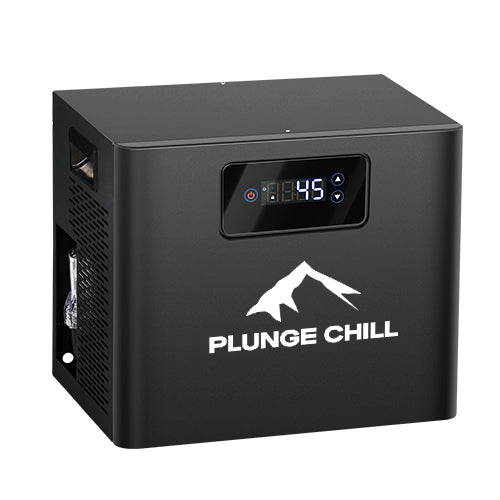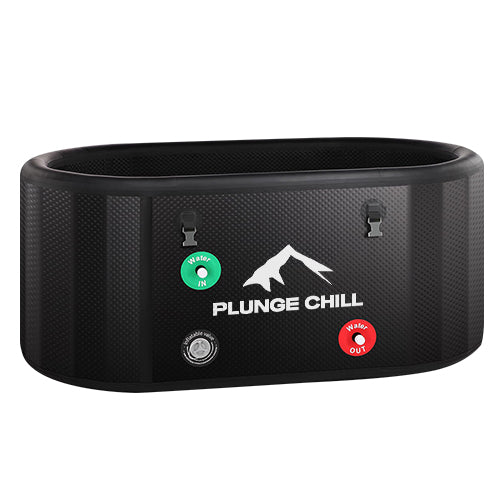Have you ever looked into cold water immersion? Cold water immersion is a method of soaking in chilly water to gain various health benefits. It’s not just a trend—it’s backed by science. Whether you want to relieve muscle soreness, speed up recovery, or improve your mood, research shows that cold water therapy can effectively reduce stress and anxiety while strengthening your mental resilience.
If you want to DIY a cold plunge at home, it’s actually pretty simple. It’s more affordable than buying a high-end cold plunge, and you can customize it to fit your space and needs. Whether you’re looking to speed up recovery after a workout or feel more refreshed and energized, a cold plunge could be your next exciting project!
Key Points to Keep in Mind
- You can use an upright freezer, a water storage tank, or a bathtub. These DIY options are easy to set up and cost-effective.
- Change the water regularly to maintain cleanliness. Use safe cleaning agents to prevent bacteria and keep the water fresh.
- Monitor the water temperature and keep it between 45°F and 60°F.
- Cold water immersion has health benefits. It can reduce inflammation, boost mood, and improve sleep. It also strengthens the immune system.
- Always prioritize safety. The area around your cold plunge may become slippery, so use non-slip mats to prevent accidents. If you feel any discomfort, listen to your body and seek professional guidance.

DIY Cold Plunge Methods
1. Freezer Method
Materials & Tools Needed:
To use an upright freezer for cold plunging, you’ll need:
- An upright freezer (large enough to fit your body)
- Silicone sealant (to prevent leaks)
- A GFCI - protected outlet for safety
- Non-slip mat (optional)
- Thermometer
- Cleaning supplies (such as vinegar or mild soap)
Step-by-Step Guide:
- Choose the right freezer – Pick an upright freezer that fits your space. Look for an energy-efficient model.
- Seal the seams – Apply silicone sealant to waterproof the seams. Let it dry completely.
- Position the freezer – Place it on a flat, sturdy surface near a GFCI outlet.
- Fill with water – Add water, leaving enough room for displacement when you get in.
- Cool the water – Plug in the freezer and monitor the temperature with a thermometer. Aim for 50°F (10°C) or lower.
- Maintain cleanliness – Regularly clean the water to keep it fresh.
Tip: Always unplug the freezer before getting in for safety.
2. Water Tank or Barrel Method
Materials & Tools Needed:
For this method, you’ll need:
- A water storage tank or barrel (100 gallons or more)
- Insulation material (optional, to help retain cold longer)
- Chiller or ice
- Thermometer
- Cleaning supplies (such as vinegar or mild soap)
Step-by-Step Guide:
- Choose a durable tank – Select a sturdy tank made of steel or thick plastic.
- Set up the area – Place the tank on a flat, stable surface. Ensure it’s easy to drain and refill.
- Fill and cool the water – Fill the tank with water and use ice or a chiller to cool it down.
- Monitor temperature – Use a thermometer to keep the water at the desired cold level.
- Regular cleaning – Change the water and clean the tank to prevent algae or bacteria buildup.
Note: Water tanks are durable and weather-resistant, making them great for outdoor use.
3. Bathtub Conversion Method
Materials & Tools Needed:
For this method, you’ll need:
- A standard bathtub
- Ice or a water chiller
- Insulation material (optional)
- Thermometer
- Cleaning supplies
Step-by-Step Guide:
- Clean the tub – Thoroughly clean the bathtub before use.
- Add insulation – If possible, add insulation to help retain cold temperatures longer.
- Fill with water and ice – Add water and enough ice to reach the desired temperature.
- Check and adjust – Use a thermometer to monitor and adjust the temperature as needed.
- Drain and clean – After use, empty and clean the tub to maintain hygiene.
Note: A standard bathtub may not provide full-body immersion. A water tank might be a better option for full submersion.

Maintaining Your DIY Cold Plunge
Keeping your DIY cold plunge clean and safe is easy with a few simple steps.
Cleaning & Water Quality
Cleaning Tips:
Regular cleaning is essential to prevent bacteria buildup. Follow these steps:
- Change the water at least once a month.
- Scrub the interior with mild soap and water.
- Run a pump and ozone generator for 30 minutes daily to purify the water.
- Clean the pump and filter regularly to remove debris.
- Check for leaks and seal them with silicone if needed.
Pro Tip: Use a siphon hose for quick and easy draining.
Recommended Cleaning Products:
The right products can make cleaning easier. Try these:
- Chlorine tablets – Helps keep water bacteria-free.
- Hydrogen peroxide or bleach – Great for cleaning tubs.
- Pool-safe cleaners – Safe for materials and water quality.
Temperature Management
Keeping the Water Cold
Maintaining a cool temperature is key to a great cold plunge experience. The ideal range is 45°F (10°C) to 60°F (15°C). Here’s how to keep it cold:
- Add insulation to your tub or tank to retain cold longer.
- Use a chiller for stable cooling.
- If using ice, monitor the temperature and add more as needed.
Note: Freezers may use more energy if the temperature fluctuates frequently.
Temperature Monitoring Tools:
To keep your water at the right temperature, use:
- Thermometer – A simple way to check water temperature.
- Remote monitoring system – Allows precise temperature control.
By following these tips, your DIY cold plunge will stay clean and properly chilled every time.

DIY Cold Plunge Safety Tips
Safety is crucial when building or using a DIY cold plunge. Taking the right precautions can help you stay safe while enjoying its benefits.
Safe Adaptation Practices:
If you're new to cold plunging, ease into it. Start with 2-3 minutes and gradually increase your time. Have someone nearby when starting out. Studies show that regular cold exposure can improve tolerance, but always listen to your body.
| Study Type | Findings | Limitations |
| Randomized Controlled Trial | Cold showers reduced sick days by 29% | Self-reported data |
| Case Study | Cold water swimming helped reduce anxiety without medication | Based on one individual |
Structural & Electrical Safety:
Ensure Stability & Prevent Leaks
A sturdy setup is key to safety. Place your cold plunge on a flat, stable surface to prevent tipping. Check for leaks regularly and seal any cracks with silicone. Keep drains clean to prevent clogging.
Tip: For extra durability, use a strong water tank or freezer.
Avoid Electrical Hazards
Never put water near electricity. Make sure that the freezer is always unplugged before use. Verify that proper precautions have been made to avoid electrical shocks by using GFCI outlets. Ground the wires for additional protection, and ensure that the wires are clean and dry.
Now that these tips have been addressed, it’s safe to say that you can confidently enjoy your DIY cold plunge.
Why Make a Cold Plunge Yourself?
Building your own cold plunge is not only entertaining, but also very rewarding. Water can be added to freezers, tanks, or even bathtubs. All of them are pretty straightforward and enable you to partake in cold water therapy straight from your house.
This is some of the great things about it:
It enhances recovery by relieving muscle soreness after rigorous activity.
It enhances general health and can boost one’s mood with frequent use.
Many civilizations in history underwent cold plunges, dating back as ancient greeks even to now.
It can be found in many pieces of research that cold water immersion is a great way of anecdotal therapy for stress disorders and can definitely make you feel happier in a matter of weeks.
Start the cold plunge journey today and enjoy a healthier life at little cost. So why wait?
What about a Water Chiller for a DIY Cold Plunge?
Necessary. A chiller here saves a lot of energy and time. Ice can cool the water. If you plan on regular plunges, purchasing an Plunge Chill Cold Plunge Chiller will help in time and effort.






